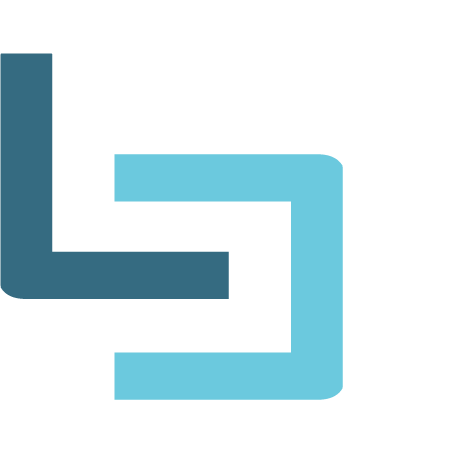
When taking out a loan, or mortgage, you are agreeing to borrow an amount of money for a set period of time. Personal loans are no different. You must pay back the full borrowed amount, interest, and applicable fees. By making regular payments, called installments, you also improve your credit score over time. Personal loans may also be called installment loans, consumer loans, or long-term financing plans.
What You Need to Provide When Applying for a Loan
Generally, lenders will require proof of the following:
- Over the age of 18
- Canadian resident
- A bank account
- Regular income
- A permanent address
- Some type of credit history
- Identity (Government ID)
Most lenders will run a credit check when you apply for a personal loan. Your credit report and fico score help lenders evaluate the amount you are likely to be approved for on your personal loan. Things they will consider are:
- Your debts
- Your credit report
- Credit score
Types of Personal Loans
Secured loans
A secured personal loan uses assets, such as your car or home, as a repayment promise to the lender. The asset is called collateral and can be taken by the lender if you cannot make your payments. Secured loans can also come in different types:
- secured personal loans
- title loans
- bad credit loans
- short-term loans
- installment loans
- debt consolidation loans
- emergency loans
Unsecured loans
An unsecured personal loan doesn’t require collateral; if you don’t make your payments, the lender may sue you. They also have other options, such as the right of offset. This is the legal right of a bank to seize deposited funds to cover a loan that is in default.
Many alternative lenders offer unsecured personal loans, referred to as installment loans. The interest rate on these loans is typically much higher than the unsecured personal loans offered by banks and credit unions.
How Do Personal Loans work?
Borrowing money with a personal loan may cost a lot, depending on your interest rate, fees and repayment term. Consider your need for the personal loan and ask yourself if you need the money now, or if you can wait.
LoanConnect takes away the hassle of shopping around when looking to get a personal loan. To get the most competitive interest rate, LoanConnect will get loan quotes from multiple lenders. Also, compare personal loans and negotiate fees such as administration fees for you.
When you take out a personal loan, your lender will give you a quote for a regular payment amount. To calculate this amount, lenders determine the total cost of the loan and divide that into equal payments. The costs of your loan include:
- the amount of the loan to be repaid
- the interest on the loan
- any other applicable fees
How To Compare Personal Loan Options 2021
It can be difficult to compare personal loan options without knowing the total cost of the loan. You can calculate the total cost by multiplying the payment amount by the number of payments in your term. At LoanConnect we help you with this process.
Suppose you want to get a personal loan for $2,000. Assume the interest rate is 19.99% on a monthly payment plan. You may be offered various monthly payment options, which include interest and other fees. For example, you have the following monthly payment options:
- 1. $185 per month for 12 months
- 2. $75 per month for 36 months
- 3. $53 per month for 60 months
Lenders may extend the duration of the loan to lower your monthly payment. When you compare the total cost of the loan, it’s easier to know which option is best for you.
Interest Fees On Personal Loans
The interest rate on a personal loan will impact the overall cost of the loan. By law, lenders may not charge more than 60% interest annually, which includes all fees, costs and interest that you’ll pay to get the loan.
Shopping around for the best interest rate might help reduce your costs. The Interest Rates on Personal Loans in Canada can be anywhere from 8.99% to 59.99% and can vary depending on the following:
- your credit history
- the type of lender
- the type of loan (secured or unsecured)
Before you take out a personal loan, consider the total cost including interest and fees. Depending on the terms of your personal loan you may end up paying more than double the retail price for an item.
Canada Personal Loan Insurance
You don’t have to take loan insurance with a personal loan, but your lender may offer optional creditor loan insurance. This type of insurance usually helps cover your loan payments if you can’t make them due to illness, accident, death or if you lose your job. The terms of your loan insurance determine how much of your loan is covered. The price of the insurance may vary based on your age, the amount of your loan and between lenders.
How Can Personal Loans Be Used?
Personal loans are typically used for purchasing cars, furniture, home renovations, emergency financing, and sometimes to consolidate debts with higher interest rates. Depending on your Credit Score, you can get personal loans ranging anywhere from $1000 to $50,000 with finance terms between 6 and 60 months.
Where Do I Get a Personal Loan From?
Personal loans are available from traditional lenders, such as banks and credit unions. Or from alternative lenders such as payday lenders, title loan companies, private lenders and a company such as LoanConnect that works with a network of Canadian Lenders to help you find a loan that suits your needs at the lowest rates possible. Easily fill out our no obligation, secure application form here.
Your lenders may even offer you a loan for more than what you need. Our customer support agents will follow up with you every step of the way and even talk to lenders to help quickly finish the application process and have you approved in no time!
Getting Your Personal Loan After You’re Approved
After being approved, you will receive your loan from the lender in one of the following ways:
- cash
- on a prepaid card
- deposited in your bank account
- as an e-transfer
- sent to other lenders directly, if you are consolidating other debts
Paying Back a Personal Loan
With a personal loan, you agree to make regular payments. Most lenders will ask for your banking information so they can take the payments directly out of your account. This is called a pre-authorized debit payment.
Depending on the lender, they may send information about your personal loan payments to the credit bureaus. If your lender reports to the credit bureaus, you can improve your credit score by making your payments on time. If you don’t make your payments on time, it may have a negative impact on your credit score.



